- Home
- Chainsaw Maintenance
- Chainsaw Chain Keeps Coming Loose
Chainsaw Chain Keeps Coming Loose
This post may contain affiliate links so I earn a commission.
If you are wondering why your chainsaw chain keeps coming loose don’t worry....it's happened to just about everyone who operates a chainsaw.
The good news is, it's easy to fix!
It’s all too easy to find information online about how to tighten a chainsaw chain, but when it comes to why it keeps coming loose in the first place, mum seems to be the word!
You can be an expert at tightening your chain but it’s going to be extremely frustrating if you keep having to do so - you need to figure out how to prevent it from coming loose instead.
In this article, we’ll tell you everything you need to know about why your chainsaw chain keeps coming loose - and how you can stop it from doing so.
5 Reasons Why Your Chainsaw Chain Keeps Coming Loose
1. Chain Not Set Properly
One of the most common reasons why your chain might be coming loose is because it was not set properly.
When you go through the steps to tension your chain, you need to finish those steps by setting the tension so it won’t change as you work your saw.
There are some chainsaws that come with automatic tensioning handles, but in general, just a bolt or two is what you will find.
These bolts are used to lock the bar in position in relation to the internal sprocket.
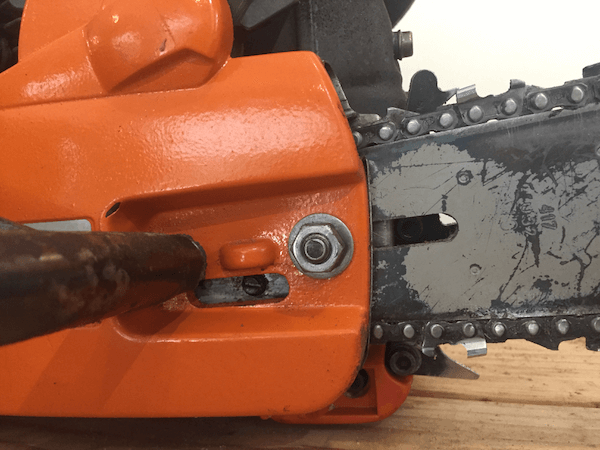
This will keep your tension consistent.
When you don't have the clutch cover nuts tightened securely to the bolts, the position of the bar can shift and wreak havoc on the tension of your chain.
2. Temperature Fluctuations
This one is basic science - when metal gets warm, it expands.
As you use your saw, it is naturally going to heat up and get larger.
Therefore, a chainsaw chain can start off tight and then loosen up.
If you store your chainsaw chain in a cool environment and then use it, you may find that your chain needs to be tightened after running it for a while.
You might not notice this as a cause of your chainsaw chain loosening unless you live in a very warm or very cold environment.
The temperature fluctuations here will have more of an impact on your chain tension.
3. Damage To The Guide Bar Or Chain
Sometimes, a damaged chain or bar can cause the chain to become loose.
This is one of the most dangerous reasons as to why your chainsaw chain might be loose.
Your chainsaw bar has a groove that runs around its outer edge.
The chain, on the other hand, has teeth that run within the bar rails to help keep the chain moving straight.
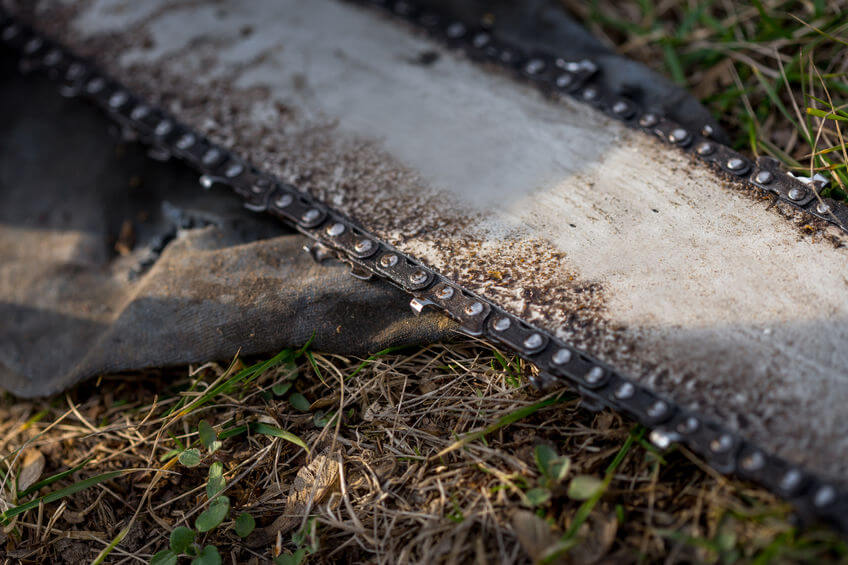
To determine if there is any damage to your chain or bar, remove the chain, bar, and chain cover.
Check for any debris around the bar and make sure it’s not worn down. If it is, you’ll notice that the rails are shallow.
If that’s the case, it will need to be replaced.
You will also want to make sure your chain oiler is in good order and that the chain itself does not have any broken teeth.
4. Mechanical Problems
Mechanical issues can also be to blame if your chainsaw chain keeps coming loose.
The tension of your saw will be determined by how much space is between your bar and the sprocket.
As you tighten your chainsaw chain, the tensioning mechanism will draw the bar further away from the sprocket.
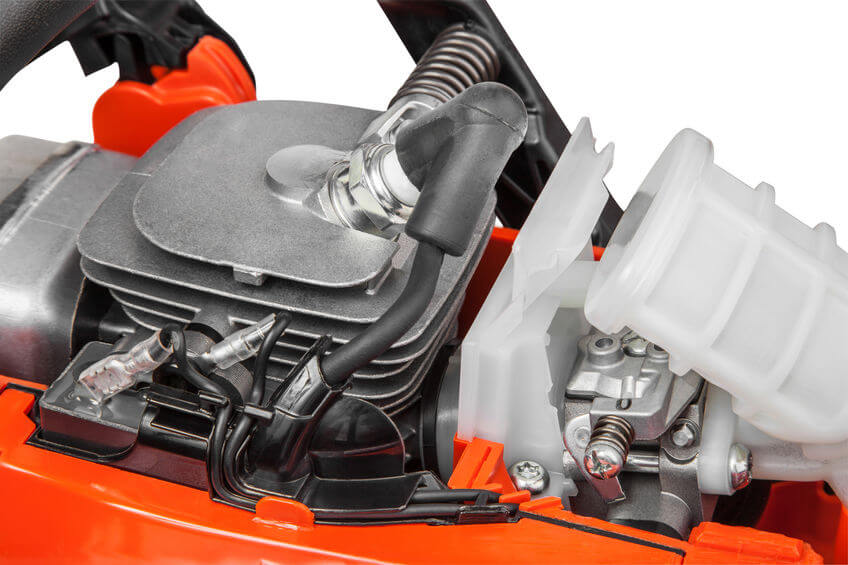
If there are any kind of malfunctions or damage with the internal components, it can cause your chainsaw to come loose.
The best way to fix this kind of problem is to pay a visit to your local chainsaw repair shop.
While you can do most of your required chainsaw maintenance yourself, for this kind of problem, you’re best off shelling out the cash to have someone do it for you.
5. It’s Actually Not Too Loose At All
A somewhat humorous reality of chainsaw use is that far more people worry about their chainsaw chains coming loose than it being too tight.
The logic makes sense - after all, it’s much more terrifying to think of your chain flying off from being too loose than it is to think about it simply being too tight.
As a result, a too tight chainsaw chain is more common than one that is too loose.
Many people over tighten their chains, which can cause just as many problems later on down the road.
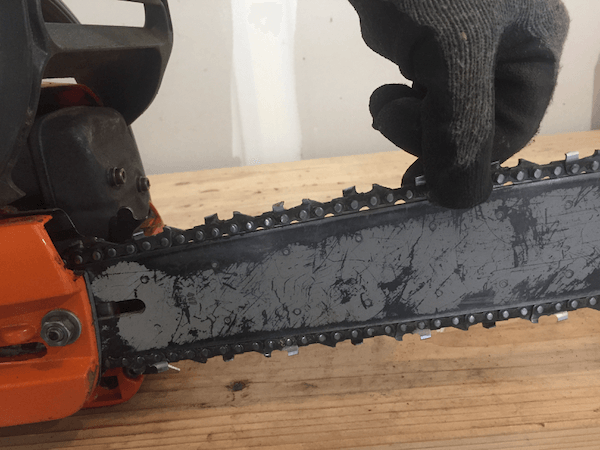
When you tighten your chain, do the pull test.
Pull the chain as far as you can with your fingers (make sure you don't cut yourself as you do this).
The chain should lift away from the bar but the drive links won’t come clear.
If the chain doesn’t lift at all, your chain is too tight - and if the drive links come clear off the bar, it’s too loose.
How To Tighten A Chainsaw Chain - Chainsaw Chain Keeps Coming Loose
If your chainsaw chain keeps coming loose, you are going to need to tighten it.
This is not a huge challenge and it only takes a few minutes to do (potentially even less once you get the hang of it).
To get the job done, you will need to use a scench.
A scrench is a special tool that is a combination of a screwdriver and a wrench and is meant specifically for tightening and loosening the different nuts of a chainsaw chain.
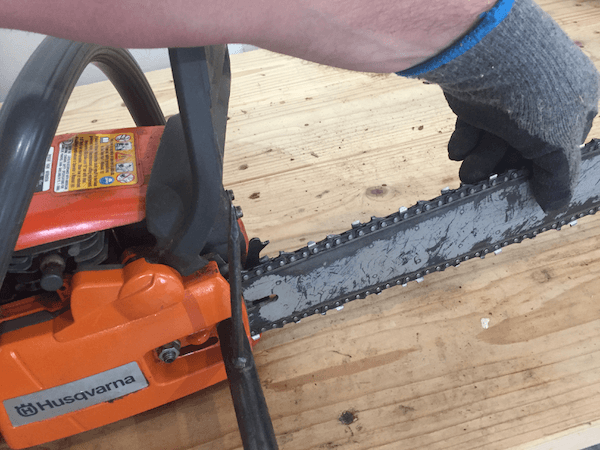
Start by loosening up the nuts of the sidebar, which will give you some room for the chain and chainsaw guide bar along with easy access to your chain.
If your chainsaw has a break that is attached directly to the side panel, you’ll need to unlock it before you proceed.
Next, rotate the side panel nut of the guide bar clockwise. You'll feel it give.
You can then pull the chain repeatedly to determine whether it’s tight enough.
When you’re working to tighten your chainsaw chain, be sure to hold it upright. This will help you get proper tension on your chain.
Chainsaw Chain Keeps Coming Loose - Overall
By troubleshooting with the tips mentioned above, a too-loose (or too-tight!) chainsaw chain should be things of the past.
Remember, chainsaws are simple machines that don’t require a ton of mechanical or technical know-how.
However, by understanding the basic mechanics of how these machines work, you can keep some money in your wallet, keep yourself safe, and keep your chainsaw running in tip-top shape.

About the Author
Obsessed with firewood, Nick is behind over 350+ of Firewood For Life's articles, as well as countless reviews, guides and YouTube videos to help readers like you reduce heating costs and create the perfect fire.


